Cucumber garden overflow got you feeling overwhelmed? I totally get it! There’s nothing quite like the joy of a thriving cucumber patch, but suddenly finding yourself swimming in more cucumbers than you know what to do with can be a bit… intense.
For centuries, cucumbers have been a staple in gardens and diets around the world. Originating in India, these refreshing veggies have journeyed across continents, becoming a symbol of freshness and vitality in various cultures. Think about it – from ancient pickling traditions to modern-day salads, cucumbers have always been a versatile and beloved ingredient.
But let’s be honest, a cucumber garden overflow isn’t just about having too many veggies. It’s about preventing waste, saving money, and making the most of your hard work! That’s why I’ve put together this collection of clever DIY tricks and hacks to help you tackle that cucumber abundance head-on. Whether you’re looking for creative recipes, preservation techniques, or even ways to share your bounty with neighbors, I’ve got you covered. Let’s turn that cucumber chaos into a culinary adventure!
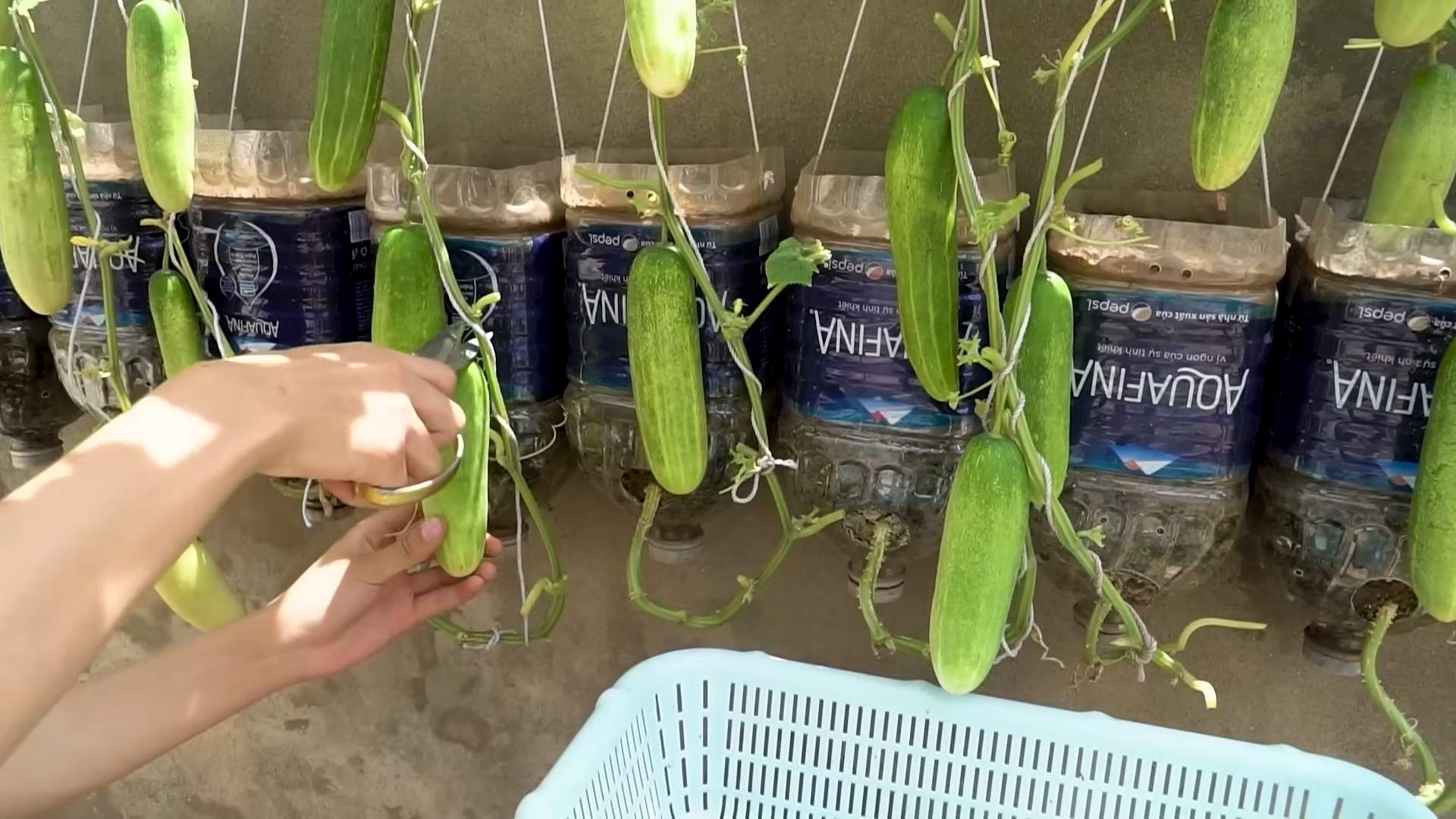
Turning Cucumber Overload into Delicious Pickles: A DIY Guide
Okay, so you’ve got a cucumber situation. A *good* cucumber situation, but a situation nonetheless. Your garden is bursting with these green goodies, and you’re starting to wonder if you can actually *become* a cucumber. Fear not! I’m here to guide you through the wonderful world of homemade pickles. We’re going to transform that cucumber mountain into jars of tangy, crunchy deliciousness.
What You’ll Need: The Pickle Arsenal
Before we dive in, let’s gather our supplies. This is crucial for a smooth pickling process. Trust me, you don’t want to be scrambling for vinegar halfway through!
* Cucumbers: Obviously! Smaller cucumbers (around 4-5 inches) are ideal for whole pickles. Larger ones can be sliced into spears or chips.
* Pickling Salt: This is different from regular table salt. It doesn’t contain iodine or anti-caking agents, which can darken your pickles and make the brine cloudy.
* Vinegar: White vinegar is the most common choice for its clean, sharp flavor. You can also use apple cider vinegar for a slightly sweeter, more complex taste. I personally love a mix of both!
* Water: Filtered water is best for the brine.
* Sugar: A little sugar balances the acidity of the vinegar.
* Spices: This is where you can get creative! Dill, garlic, mustard seeds, peppercorns, coriander seeds, red pepper flakes, and bay leaves are all popular choices. I’ll share my favorite spice blend later.
* Fresh Dill: If you can get your hands on fresh dill, it makes a HUGE difference.
* Garlic: Fresh garlic cloves are essential for that classic pickle flavor.
* Jars and Lids: You’ll need canning jars, lids, and rings. Make sure they’re clean and in good condition. I usually use pint or quart jars.
* Canning Equipment: A large pot for boiling water, a jar lifter, a wide-mouth funnel, and a bubble remover/headspace tool are all helpful. If you don’t have a jar lifter, you can use tongs, but be careful!
Preparing the Cucumbers: The Crunchy Foundation
The key to crunchy pickles is proper cucumber preparation. Here’s what I do:
1. Wash and Trim: Thoroughly wash the cucumbers to remove any dirt or debris. Trim about 1/16 inch off the blossom end of each cucumber. This removes an enzyme that can cause softening.
2. Soak (Optional but Recommended): For extra-crisp pickles, soak the cucumbers in ice water for a few hours or overnight. This helps them stay firm during the pickling process. I find this step makes a noticeable difference.
3. Cut (If Desired): If you’re making spears or chips, cut the cucumbers to your desired size.
Making the Brine: The Flavor Infusion
The brine is what gives pickles their signature tangy flavor. Here’s my go-to recipe:
1. Combine Ingredients: In a large, non-reactive saucepan (stainless steel or enamel-coated), combine:
* 5 cups white vinegar
* 1 cup apple cider vinegar (optional, but adds a nice depth)
* 5 cups water
* 1/4 cup pickling salt
* 1/2 cup granulated sugar
2. Spice It Up: Add your spices. Here’s my favorite blend for a quart jar:
* 2 cloves garlic, smashed
* 1 tablespoon mustard seeds
* 1 teaspoon black peppercorns
* 1/2 teaspoon coriander seeds
* 1/4 teaspoon red pepper flakes (optional, for a little heat)
* 2-3 sprigs fresh dill
* 1 bay leaf
Adjust the spices to your liking!
3. Bring to a Boil: Bring the brine to a rolling boil over medium-high heat, stirring until the salt and sugar are dissolved.
4. Simmer: Reduce the heat and simmer for 5 minutes to allow the flavors to meld.
Packing the Jars: The Art of Arrangement
Packing the jars properly is important for both aesthetics and safety.
1. Prepare Jars: Wash your canning jars, lids, and rings in hot, soapy water. Rinse well.
2. Sterilize Jars: There are a few ways to sterilize your jars:
* Boiling Water Bath: Place the jars in a large pot of boiling water for 10 minutes.
* Oven: Preheat your oven to 200°F (93°C). Place the jars on a baking sheet and heat for 10 minutes.
* Dishwasher: Run the jars through a hot cycle in your dishwasher.
Keep the jars hot until you’re ready to fill them.
3. Add Spices to Jars: Place your spice blend (garlic, dill, mustard seeds, etc.) into the bottom of each jar. I usually divide the spices evenly among the jars.
4. Pack Cucumbers: Pack the cucumbers tightly into the jars, leaving about 1/2 inch of headspace (the space between the top of the cucumbers and the rim of the jar). You can pack them vertically for whole pickles or horizontally for spears or chips.
5. Pour Brine: Carefully pour the hot brine over the cucumbers, leaving 1/2 inch of headspace.
6. Remove Air Bubbles: Use a bubble remover or a clean utensil (like a chopstick) to gently release any trapped air bubbles. Run it along the inside of the jar.
7. Wipe Rims: Wipe the rims of the jars with a clean, damp cloth to remove any spills. This is crucial for a good seal.
8. Place Lids and Rings: Place the lids on the jars and screw on the rings until they are fingertip tight (not too tight, not too loose).
Processing the Pickles: The Preservation Power
Processing the pickles in a boiling water bath is essential for long-term storage. This creates a vacuum seal that prevents spoilage.
1. Prepare Boiling Water Bath: Fill a large pot with enough water to cover the jars by at least 1 inch. Place a canning rack in the bottom of the pot to prevent the jars from sitting directly on the heat. Bring the water to a rolling boil.
2. Load Jars: Carefully lower the jars into the boiling water bath using a jar lifter. Make sure the jars are not touching each other.
3. Process: Process the jars according to the following times:
* Pint Jars: 10 minutes
* Quart Jars: 15 minutes
Adjust processing time for altitude. If you live above 1,000 feet, you’ll need to increase the processing time. Consult a reliable canning guide for specific recommendations.
4. Turn Off Heat and Wait: Turn off the heat and let the jars sit in the hot water for 5 minutes. This helps prevent siphoning (when liquid is drawn out of the jars).
Okay, so you’ve got a cucumber situation. A *good* cucumber situation, but a situation nonetheless. Your garden is bursting with these green goodies, and you’re starting to wonder if you can actually *become* a cucumber. Fear not! I’m here to guide you through the wonderful world of homemade pickles. We’re going to transform that cucumber mountain into jars of tangy, crunchy deliciousness.
What You’ll Need: The Pickle Arsenal
Before we dive in, let’s gather our supplies. This is crucial for a smooth pickling process. Trust me, you don’t want to be scrambling for vinegar halfway through!
* Cucumbers: Obviously! Smaller cucumbers (around 4-5 inches) are ideal for whole pickles. Larger ones can be sliced into spears or chips.
* Pickling Salt: This is different from regular table salt. It doesn’t contain iodine or anti-caking agents, which can darken your pickles and make the brine cloudy.
* Vinegar: White vinegar is the most common choice for its clean, sharp flavor. You can also use apple cider vinegar for a slightly sweeter, more complex taste. I personally love a mix of both!
* Water: Filtered water is best for the brine.
* Sugar: A little sugar balances the acidity of the vinegar.
* Spices: This is where you can get creative! Dill, garlic, mustard seeds, peppercorns, coriander seeds, red pepper flakes, and bay leaves are all popular choices. I’ll share my favorite spice blend later.
* Fresh Dill: If you can get your hands on fresh dill, it makes a HUGE difference.
* Garlic: Fresh garlic cloves are essential for that classic pickle flavor.
* Jars and Lids: You’ll need canning jars, lids, and rings. Make sure they’re clean and in good condition. I usually use pint or quart jars.
* Canning Equipment: A large pot for boiling water, a jar lifter, a wide-mouth funnel, and a bubble remover/headspace tool are all helpful. If you don’t have a jar lifter, you can use tongs, but be careful!
Preparing the Cucumbers: The Crunchy Foundation
The key to crunchy pickles is proper cucumber preparation. Here’s what I do:
1. Wash and Trim: Thoroughly wash the cucumbers to remove any dirt or debris. Trim about 1/16 inch off the blossom end of each cucumber. This removes an enzyme that can cause softening.
2. Soak (Optional but Recommended): For extra-crisp pickles, soak the cucumbers in ice water for a few hours or overnight. This helps them stay firm during the pickling process. I find this step makes a noticeable difference.
3. Cut (If Desired): If you’re making spears or chips, cut the cucumbers to your desired size.
Making the Brine: The Flavor Infusion
The brine is what gives pickles their signature tangy flavor. Here’s my go-to recipe:
1. Combine Ingredients: In a large, non-reactive saucepan (stainless steel or enamel-coated), combine:
* 5 cups white vinegar
* 1 cup apple cider vinegar (optional, but adds a nice depth)
* 5 cups water
* 1/4 cup pickling salt
* 1/2 cup granulated sugar
2. Spice It Up: Add your spices. Here’s my favorite blend for a quart jar:
* 2 cloves garlic, smashed
* 1 tablespoon mustard seeds
* 1 teaspoon black peppercorns
* 1/2 teaspoon coriander seeds
* 1/4 teaspoon red pepper flakes (optional, for a little heat)
* 2-3 sprigs fresh dill
* 1 bay leaf
Adjust the spices to your liking!
3. Bring to a Boil: Bring the brine to a rolling boil over medium-high heat, stirring until the salt and sugar are dissolved.
4. Simmer: Reduce the heat and simmer for 5 minutes to allow the flavors to meld.
Packing the Jars: The Art of Arrangement
Packing the jars properly is important for both aesthetics and safety.
1. Prepare Jars: Wash your canning jars, lids, and rings in hot, soapy water. Rinse well.
2. Sterilize Jars: There are a few ways to sterilize your jars:
* Boiling Water Bath: Place the jars in a large pot of boiling water for 10 minutes.
* Oven: Preheat your oven to 200°F (93°C). Place the jars on a baking sheet and heat for 10 minutes.
* Dishwasher: Run the jars through a hot cycle in your dishwasher.
Keep the jars hot until you’re ready to fill them.
3. Add Spices to Jars: Place your spice blend (garlic, dill, mustard seeds, etc.) into the bottom of each jar. I usually divide the spices evenly among the jars.
4. Pack Cucumbers: Pack the cucumbers tightly into the jars, leaving about 1/2 inch of headspace (the space between the top of the cucumbers and the rim of the jar). You can pack them vertically for whole pickles or horizontally for spears or chips.
5. Pour Brine: Carefully pour the hot brine over the cucumbers, leaving 1/2 inch of headspace.
6. Remove Air Bubbles: Use a bubble remover or a clean utensil (like a chopstick) to gently release any trapped air bubbles. Run it along the inside of the jar.
7. Wipe Rims: Wipe the rims of the jars with a clean, damp cloth to remove any spills. This is crucial for a good seal.
8. Place Lids and Rings: Place the lids on the jars and screw on the rings until they are fingertip tight (not too tight, not too loose).
Processing the Pickles: The Preservation Power
Processing the pickles in a boiling water bath is essential for long-term storage. This creates a vacuum seal that prevents spoilage.
1. Prepare Boiling Water Bath: Fill a large pot with enough water to cover the jars by at least 1 inch. Place a canning rack in the bottom of the pot to prevent the jars from sitting directly on the heat. Bring the water to a rolling boil.
2. Load Jars: Carefully lower the jars into the boiling water bath using a jar lifter. Make sure the jars are not touching each other.
3. Process: Process the jars according to the following times:
* Pint Jars: 10 minutes
* Quart Jars: 15 minutes
Adjust processing time for altitude. If you live above 1,000 feet, you’ll need to increase the processing time. Consult a reliable canning guide for specific recommendations.
4. Turn Off Heat and Wait: Turn off the heat and let the jars sit in the hot water for 5 minutes. This helps prevent siphoning (when liquid is drawn out of the jars).
5. Remove Jars: Carefully remove the jars from the boiling water bath using a jar lifter and place them on a towel-lined surface to cool.
6. Listen for the Pop: As the jars cool, you should hear a “pop” sound. This indicates that the lids have sealed properly.
7. Check Seals: After the jars have cooled completely (usually 12-24 hours), check the seals. The lids should be concave (curved downward) and should not flex when pressed. If a lid doesn’t seal, you can reprocess the jar with a new lid or store the pickles in the refrigerator and eat them within a few weeks.
8. Label and Store: Label the jars with the date and contents and store them in a cool, dark place. Properly processed pickles can last for up to a year.
Troubleshooting: Pickle Problems and Solutions
Sometimes, things don’t go exactly as planned. Here are some common pickle problems and how to fix them:
* Soft Pickles: This can be caused by using table salt instead of pickling salt, not trimming the blossom end of the cucumbers, or not processing the pickles long enough. Make sure to follow the instructions carefully and use fresh, firm cucumbers.
* Cloudy Brine: This can be caused by using hard water, not removing air bubbles, or using spices that are not fresh. Use filtered water and make sure to remove all air bubbles before processing.
* Shriveled Pickles: This can be caused by using too much salt or sugar in the brine. Adjust the recipe to your liking.
* Lids Not Sealing: This can be caused
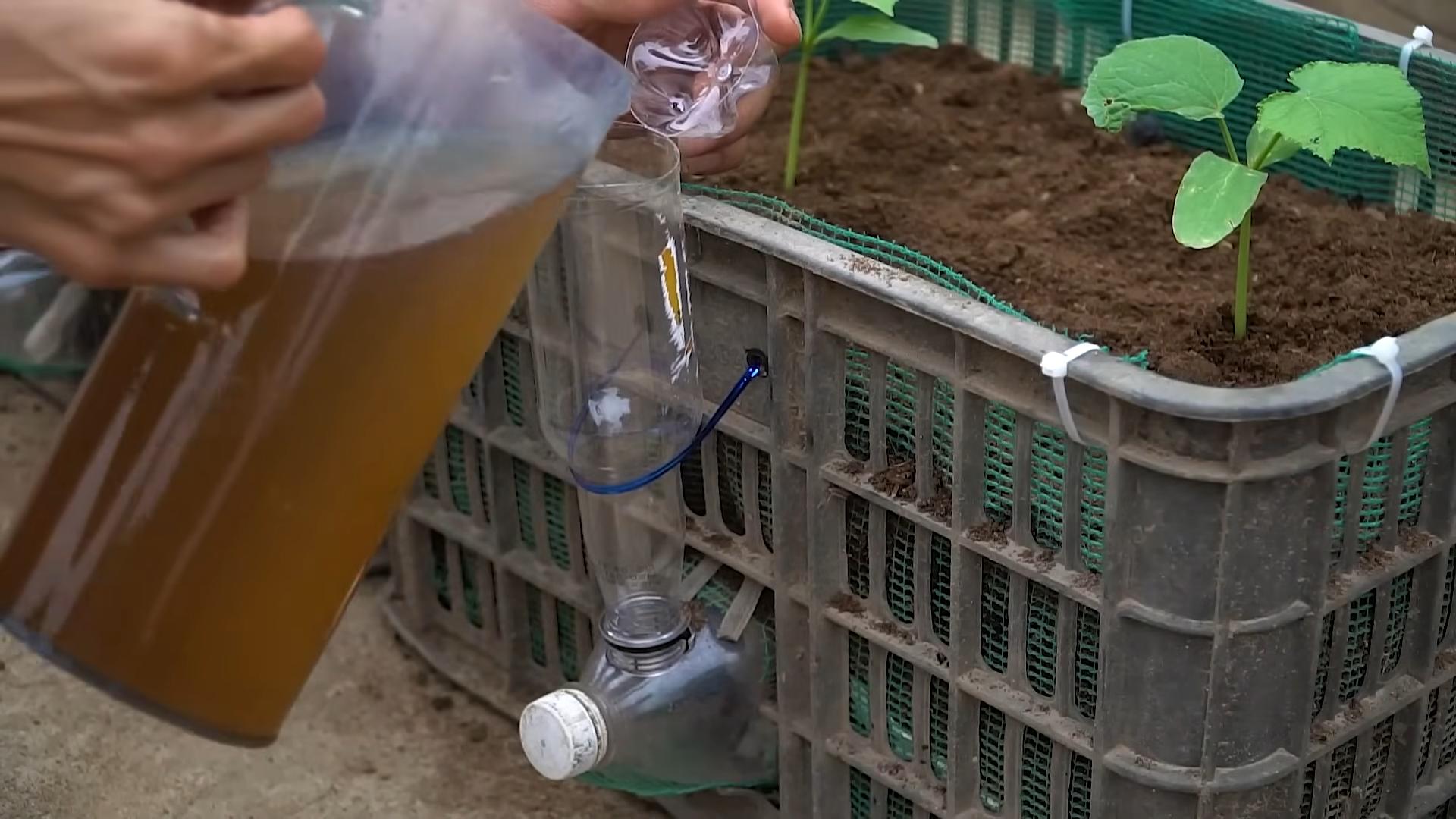
Conclusion
So, there you have it! Transforming your cucumber garden overflow into delicious, tangy, and utterly addictive homemade pickles is not just a way to prevent food waste; it’s a culinary adventure waiting to happen. This DIY pickle recipe is a game-changer, offering a fresher, more flavorful alternative to store-bought options, and allowing you to customize the taste to your exact preferences.
Why is this DIY trick a must-try? Because it’s simple, rewarding, and incredibly satisfying. Imagine the pride you’ll feel serving up jars of your own homemade pickles, knowing that they started as humble cucumbers from your very own garden. Plus, you’re in complete control of the ingredients, ensuring a pickle that’s free from artificial preservatives and packed with natural goodness.
But the fun doesn’t stop there! Feel free to experiment with different variations to create your signature pickle. Want a spicier kick? Add a few sliced jalapeños or a pinch of red pepper flakes to the brine. Craving a sweeter pickle? Increase the sugar slightly or add a touch of honey. For a more complex flavor profile, try incorporating other herbs and spices like dill seeds, mustard seeds, coriander seeds, or even a bay leaf or two. You can also play around with different types of vinegar, such as apple cider vinegar or white wine vinegar, to alter the overall tanginess. Consider adding sliced onions or garlic cloves for extra flavor depth.
Don’t be afraid to get creative and tailor the recipe to your own taste buds. The beauty of this DIY pickle recipe is its versatility. You can even experiment with different cucumber varieties to see how they affect the final product. Pickling cucumbers are ideal, but even larger cucumbers can be used if you remove the seeds and cut them into smaller pieces.
This method is not just about making pickles; it’s about embracing a sustainable lifestyle and appreciating the bounty of your garden. It’s about connecting with your food and creating something truly special with your own two hands. It’s about reducing waste and maximizing flavor.
We are confident that once you try this DIY pickle recipe, you’ll never go back to store-bought pickles again. The taste difference is simply undeniable. The crispness, the tanginess, the freshness – it’s all on a completely different level.
So, what are you waiting for? Gather your cucumbers, raid your spice rack, and get pickling! We encourage you to try this DIY trick and share your experience with us. Let us know what variations you tried, what flavors you loved, and any tips or tricks you discovered along the way. Share your photos and stories on social media using #HomemadePickles #DIYPickles #CucumberGardenOverflow. We can’t wait to see what delicious creations you come up with! Happy pickling!
Frequently Asked Questions (FAQ)
Q: What kind of cucumbers are best for pickling?
A: While you can technically pickle any type of cucumber, pickling cucumbers are specifically bred for this purpose. They have thinner skins, fewer seeds, and a firmer texture that holds up well during the pickling process. Common pickling cucumber varieties include Kirby, National Pickling, and Boston Pickling. However, if you only have regular cucumbers from your garden, you can still use them! Just be sure to remove the seeds and cut them into smaller pieces to ensure they pickle properly.
Q: How long do homemade pickles last?
A: Properly canned and sealed pickles can last for up to a year in a cool, dark place. However, once opened, they should be refrigerated and consumed within a few weeks. If you’re not planning on canning your pickles, you can store them in the refrigerator for up to a month. Just be sure to use a clean, airtight container.
Q: Do I need to use a special canning process to make these pickles shelf-stable?
A: For long-term storage and shelf stability, it’s recommended to use a proper canning process, which involves sterilizing jars and processing them in a boiling water bath. This ensures that the pickles are properly sealed and prevents spoilage. However, if you’re planning on consuming the pickles within a few weeks, you can skip the canning process and simply store them in the refrigerator.
Q: Can I adjust the amount of sugar or vinegar in the brine?
A: Absolutely! The beauty of making your own pickles is that you can customize the recipe to your exact preferences. If you prefer a sweeter pickle, you can increase the amount of sugar. If you prefer a tangier pickle, you can increase the amount of vinegar. Just be sure to maintain a proper ratio of vinegar to water to ensure that the pickles are properly preserved. A good starting point is a 1:1 ratio of vinegar to water, but you can adjust it slightly to suit your taste.
Q: What other spices can I add to the brine?
A: The possibilities are endless! Some popular additions include dill seeds, mustard seeds, coriander seeds, black peppercorns, red pepper flakes, garlic cloves, and bay leaves. You can also experiment with other herbs and spices like thyme, rosemary, or even a pinch of turmeric for a unique flavor profile. Don’t be afraid to get creative and try different combinations to find your perfect pickle blend.
Q: My pickles are soft and mushy. What did I do wrong?
A: There are a few reasons why your pickles might be soft and mushy. One common cause is using cucumbers that are too old or have been stored for too long. Fresh, firm cucumbers are essential for making crisp pickles. Another reason could be overcooking the pickles during the canning process. Be sure to follow the canning instructions carefully and avoid processing the pickles for too long. Finally, using too much salt or sugar in the brine can also contribute to soft pickles.
Q: Can I use this recipe to pickle other vegetables besides cucumbers?
A: Yes, you can! This recipe can be adapted to pickle other vegetables like green beans, carrots, onions, and peppers. Just be sure to adjust the cooking time accordingly, as different vegetables will require different processing times. You may also want to experiment with different spice combinations to complement the flavor of the vegetables you’re pickling.
Q: What’s the best way to sterilize my jars for canning?
A: There are several ways to sterilize your jars for canning. One common method is to wash the jars and lids in hot, soapy water, then place them in a boiling water bath for 10 minutes. You can also sterilize them in the oven by placing them on a baking sheet and heating them to 250°F (120°C) for 20 minutes. Another option is to use a dishwasher with a sterilization cycle. Be sure to sterilize the jars just before you’re ready to fill them to prevent them from becoming contaminated.
Q: Can I reuse pickle brine?
A: It’s generally not recommended to reuse pickle brine for canning, as the acidity may have decreased, which could compromise the safety of the pickles. However, you can reuse pickle brine for other purposes, such as marinating meat or vegetables, adding flavor to sauces or dressings, or even using it as a natural weed killer. Just be sure to store the brine in the refrigerator and use it within a few days.
Q: What if I don’t have a garden and can’t grow my own cucumbers?
A: No problem! You can still make delicious homemade pickles using store-bought cucumbers. Look for fresh, firm cucumbers at your local farmers market or grocery store. Pickling cucumbers are often available during the summer months. Just be sure to choose cucumbers that are free from blemishes and have a good, green color.


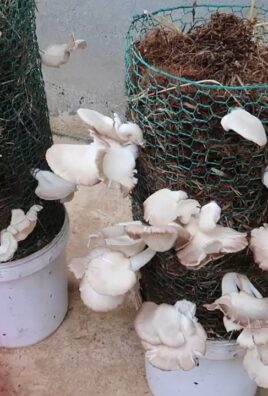
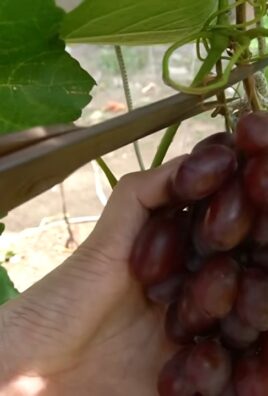
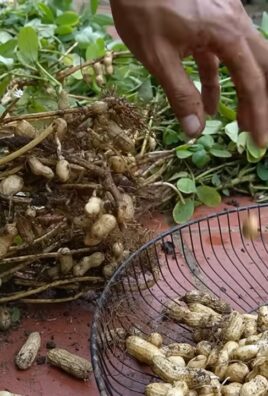
Leave a Comment